Your cart is currently empty!
Sony FE 600mm f/4 GM OSS
Sony FE 600mm f/4 GM OSS
[columnize]
06.07.2019 This is not a complete field review, but based on one evening shooting with the new Sony FE 600mm f/4 GM OSS lens and the A9 camera. In April 2015 I had the great pleasure to do an assignment for Nikon Japan with the new Nikon 600mm f/4.0E FL ED VR during 10 days in South Africa. I have also before 2010 photographed with Canon 600mm lenses, so 600mm f/4.0 has been my main lens for about 20 years as a wildlife photographer. When Sony asked me if I was interested to test the new Sony FE 600mm f/4 GM OSS lens, it was easy for me to say “yes”.
I wanted to photograph a very challenging target for this limited lens test, and one of the most difficult birds to photograph in flight (in Norway) is the Sand Martin (Riparia riparia). They are small, fast-flying swallows, with erratic, quick movements. They can be hard to follow even toward a clear blue sky. I wanted to try to photograph this swallow in low light condition – at sunset, and after sunset – and toward a challenging background. I’ve never succeeded before with Nikon or Canon 600mm lenses to track these swallows in such conditions.
[/columnize][gap size=”50px”]
Written by: Ole J Liodden
[gap size=”50px”] [alert type=”warning” close=”true” heading=””]Nobody (Sony or other) has asked me to write this short field review, or paid me to do it. This limited field review is simply my independent thoughts and experience with the new Sony FE 600mm f/4 GM OSS lens.
[/alert]EARLIER EXPERIENCE WITH SONY
[columnize]
I’ve used Nikon equipment almost exclusively between 2010–2018. Last 1,5 years I’ve used Sony A7RII and A7RIII cameras for underwater photography, and lately more Sony equipment in my mirrorless kit. However, I’ve never before used the A9 camera for serious action photography, so this was a new experience for me. The basic settings for the AF-system was, Focus Area: “Lock-on AF: Wide” (I started with “Lock-on AF Expand Flexible Spot, but the “Wide” option was better because of the erratic movements), AF Track Sens: 3, and off course “Continuous AF”. Since this is a lens test – not an image sensor test for the A9-camera – I pushed the ISO from 3200–10.000 in most situations to freeze the birds in flight, so no panning or artistic photography. Thus, some of the images might have some noise, due to high ISO in low light conditions.
[/columnize]
AF-SPEED AND ACCURACY
[columnize]
The Sand martin is one of the most difficult bird species to photograph in flight. It’s almost impossible to keep these birds in the centre of the frame, and sometimes the birds quickly turns and are outside the frame. However the A9 and Sony 600mm did an extremely good job of tracking the fast moving swallows. Even when the birds flew in the shadows, in front of trees in the sun, the AF-system locked on the bird and the lens tracked amazingly well. To be honest, I expected the Sony setup to fail in these challenging conditions, but the AF-tracking was very impressive.
[/columnize] [gap size=”50px”]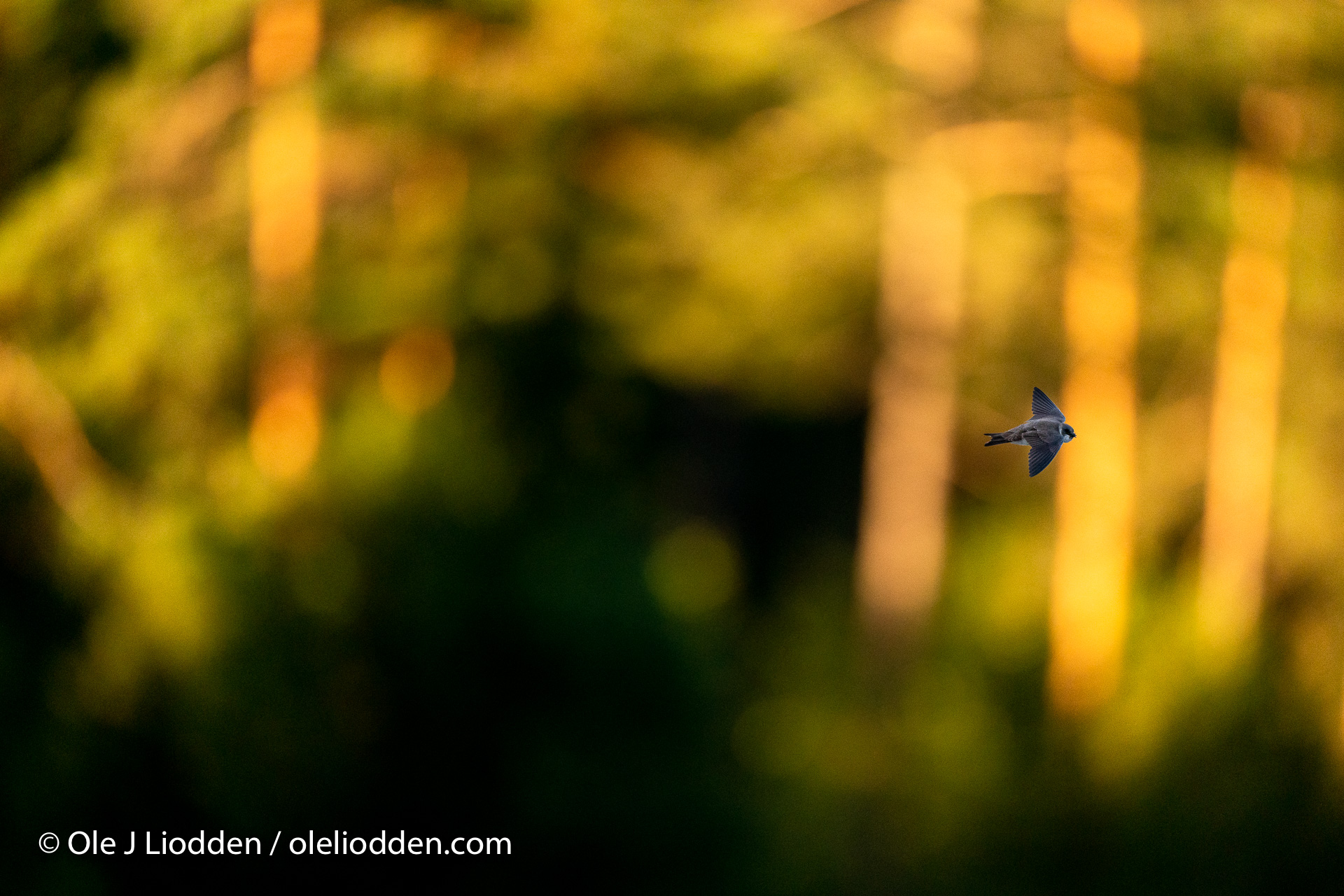
In all my career as a pro wildlife photographers I’ve been forced to track my subjects in the center (or close to the center) of the frame, with AF Group or other settings activating AF-helping points. The Nikon D5 camera allows for the d153-setting with 153 active AF-points, but still I’ve preferred to limit the number of active AF-point to the center of the frame.
The Sony A9 camera has an impressive AF-system with 693 AF-point from corner to corner, tracking moving subjects both fast and accurate. When activating Lock-on AF the AF-system is tracking the subject from one side of the frame to the other, from bottom to top, or whatever movements the subjects have. With a fast moving bird and a long lens this makes photography easier, since you don’t need to keep the subject in the center (which often is impossible).
What was even more impressive with the A9 + 600mm combo was in situations when the bird left the frame completely, and was gone for a split second, but the AF continued to track when the bird was back in the frame. I’m not sure if this was pure luck, or if the Sony AF-system has some “memory” of a recently followed subject. However, this can save some important situations when the subject is moving too fast or too erratic.
[/columnize] [gap size=”50px”]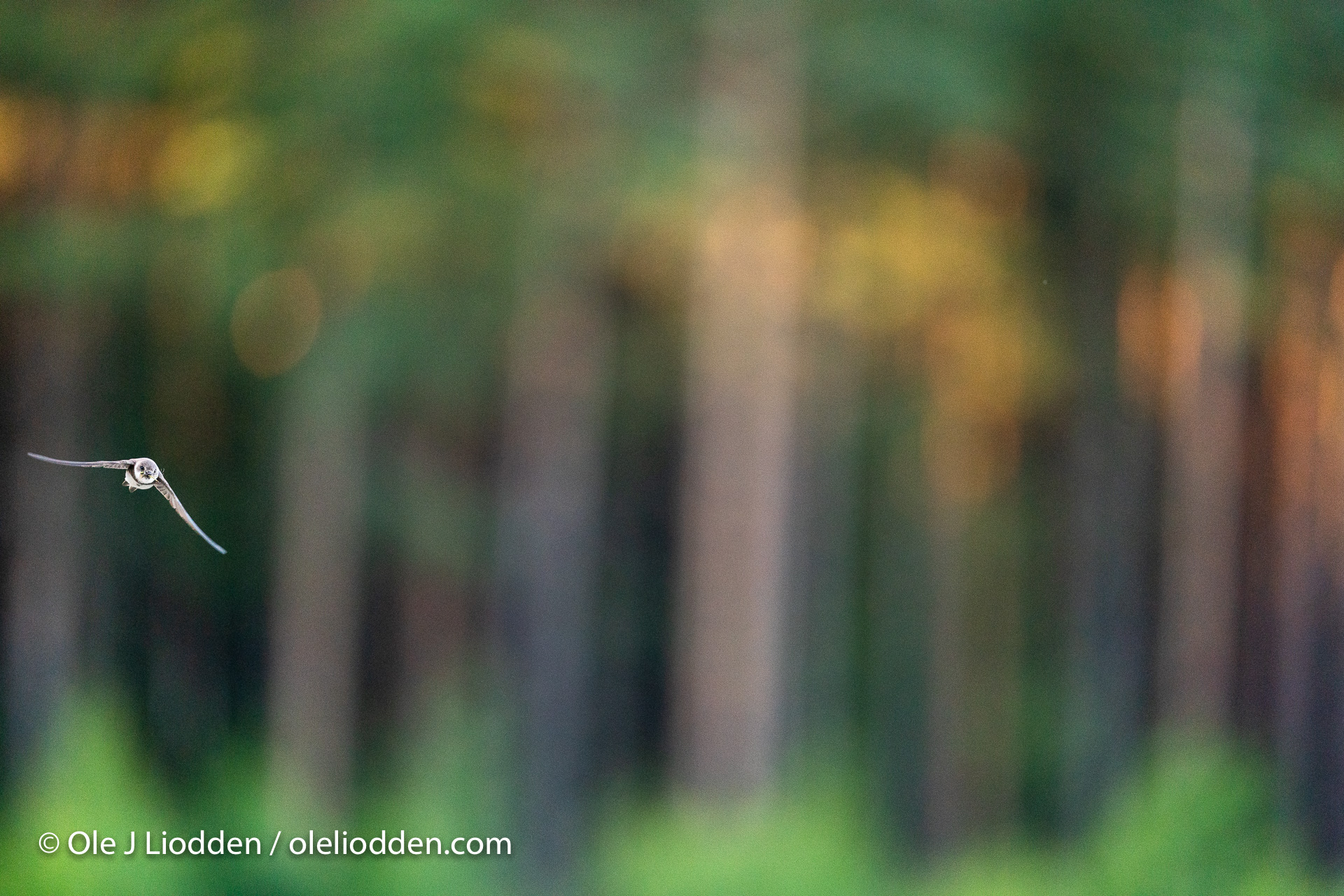
One of the main challenges in action photography is when the subject is moving in front of background with high contrast, or even worse when moving from an area with high contrast / bright background to dark background. As shown in the images below, the A9 + 600m combo managed to track the swallow flying from the area with sunny trees in the background, to a much darker background in the shadow. It was impressive to experience not only one or two sharp images from a series of images, but the whole series with sharp images. The only situation when the AF-system failed, was when the swallow dived quickly from a very bright sky directly down in front of a very dark background.
I also photographed the swallows (in the shadows) flying fast in front of trees in the background with sun. In most situations it continued to focus in this very challenging conditions, however this did not work all the time, but the hit rate was much higher than expected. For me, it was a new expereince to have AF-follow focus in these situations at all! While the A9 camera and the 600mm could track fast, small subjects in front of bright contrasty background, it was more difficult to start to track subjects in front of such background (it preferred to focus on a bright tree instead). So, it is important to get the subject in focus, and start Lock-on AF before the subject moves in front of the challenging background.
[/columnize] [gap size=”50px”]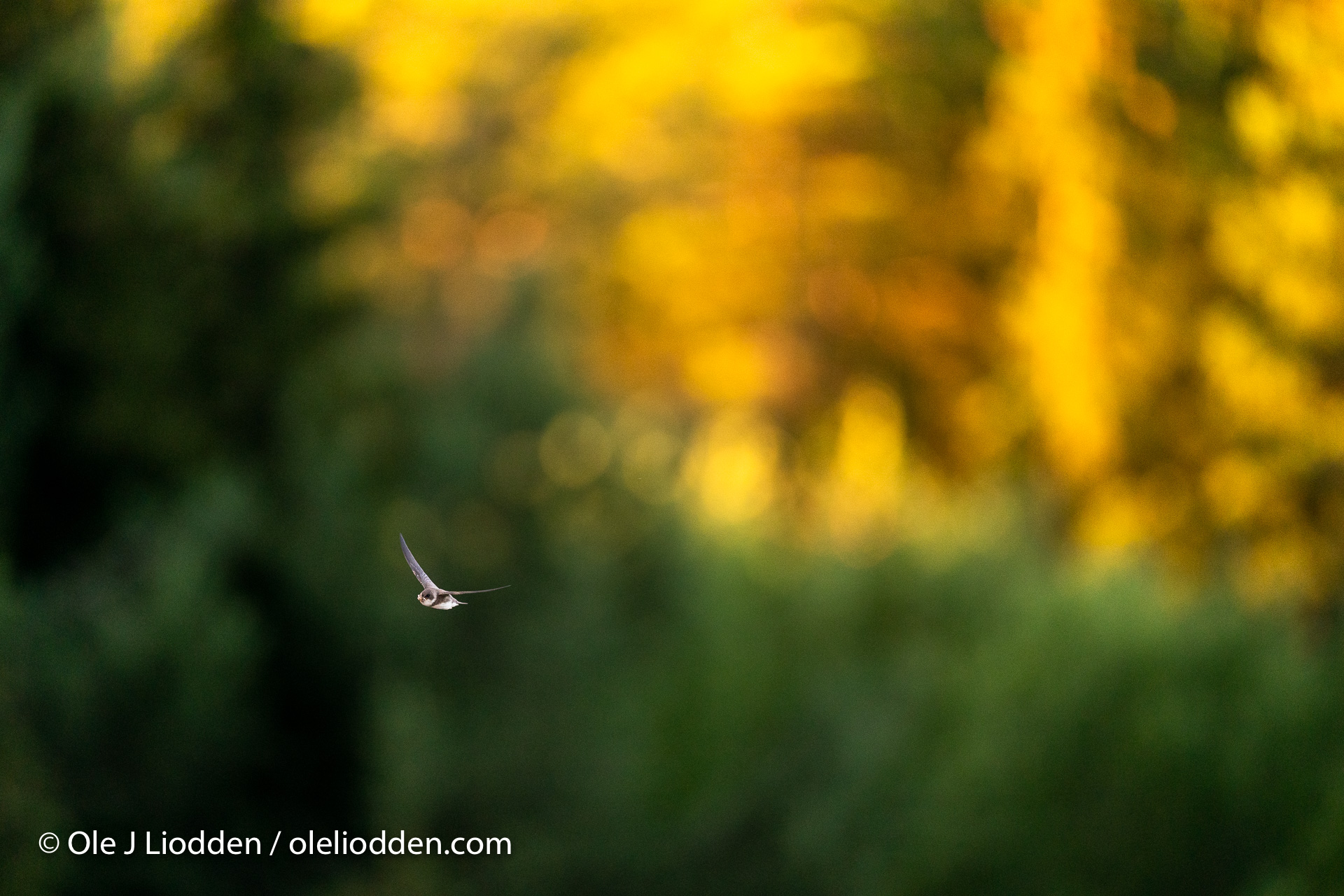
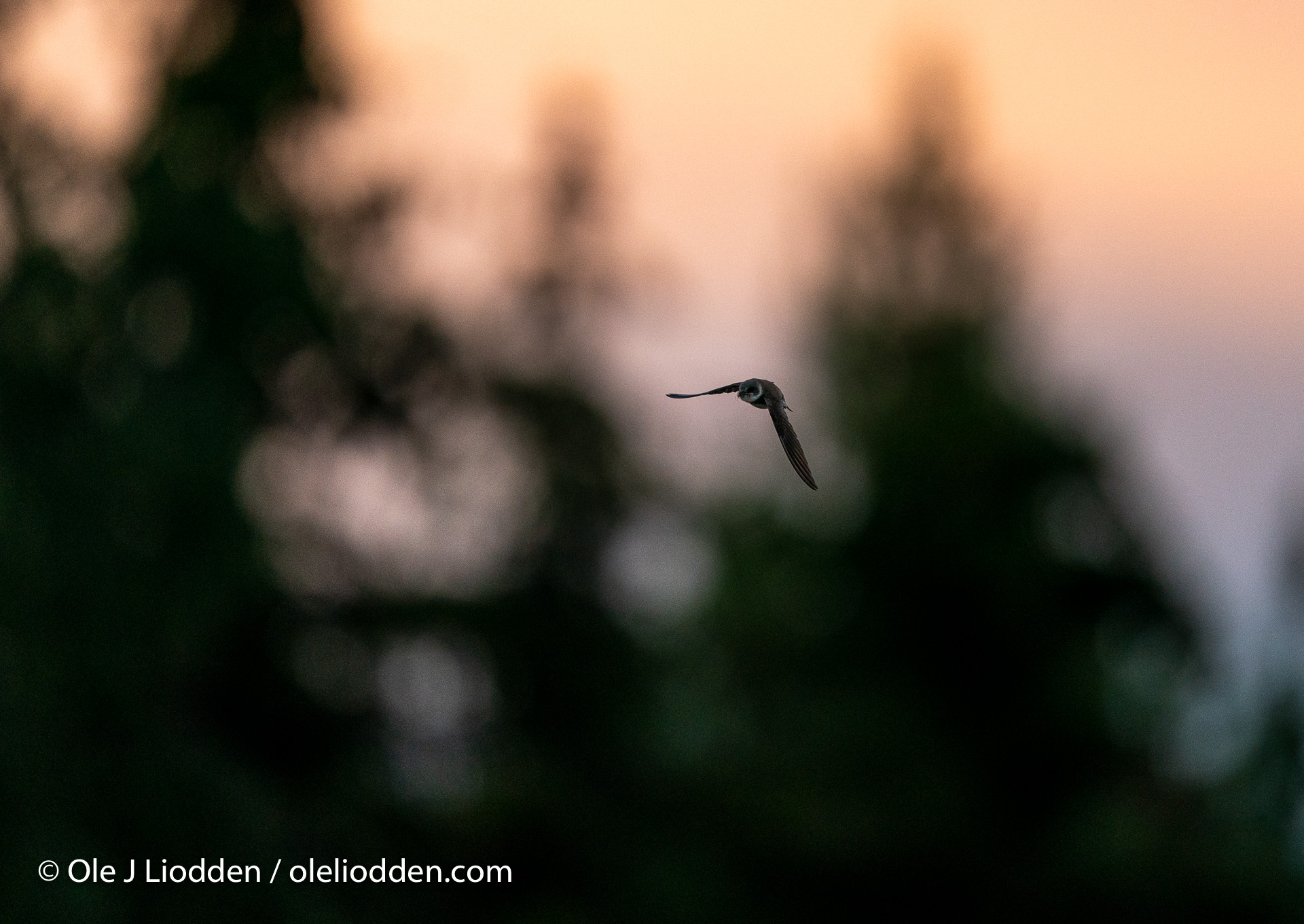
LENS SHARPNESS
[columnize]
One of the most important qualities of a telephoto lens is the sharpness. In my short test period with this lens I was most concerned about the AF-tracking as described above. However, after looking at more than 2000 images from the test shooting, I can’t find any problems or less sharpness than what I’m used to with my Nikon 600mm lens. The MTF chart for the Sony FE 600mm is just a flat line, which describe a lens with superb sharpness.
[/columnize]
BOKEH
[columnize]
One of the main reasons to shoot with a 600mm, is to get nice blurred backgrounds. Many photographers (including myself) loves this bokeh, shooting at almost wide open apertures. The results I got from this short test was pleasing, and I couldn’t see any disadvantages compared to other 600mm lenses I’ve used before. However, I’ve not had any chances to test the new Sony 600mm with low level, backlit shooting of reflections in the water, or other bright conditions.
[/columnize]
[gap size=”50px”]
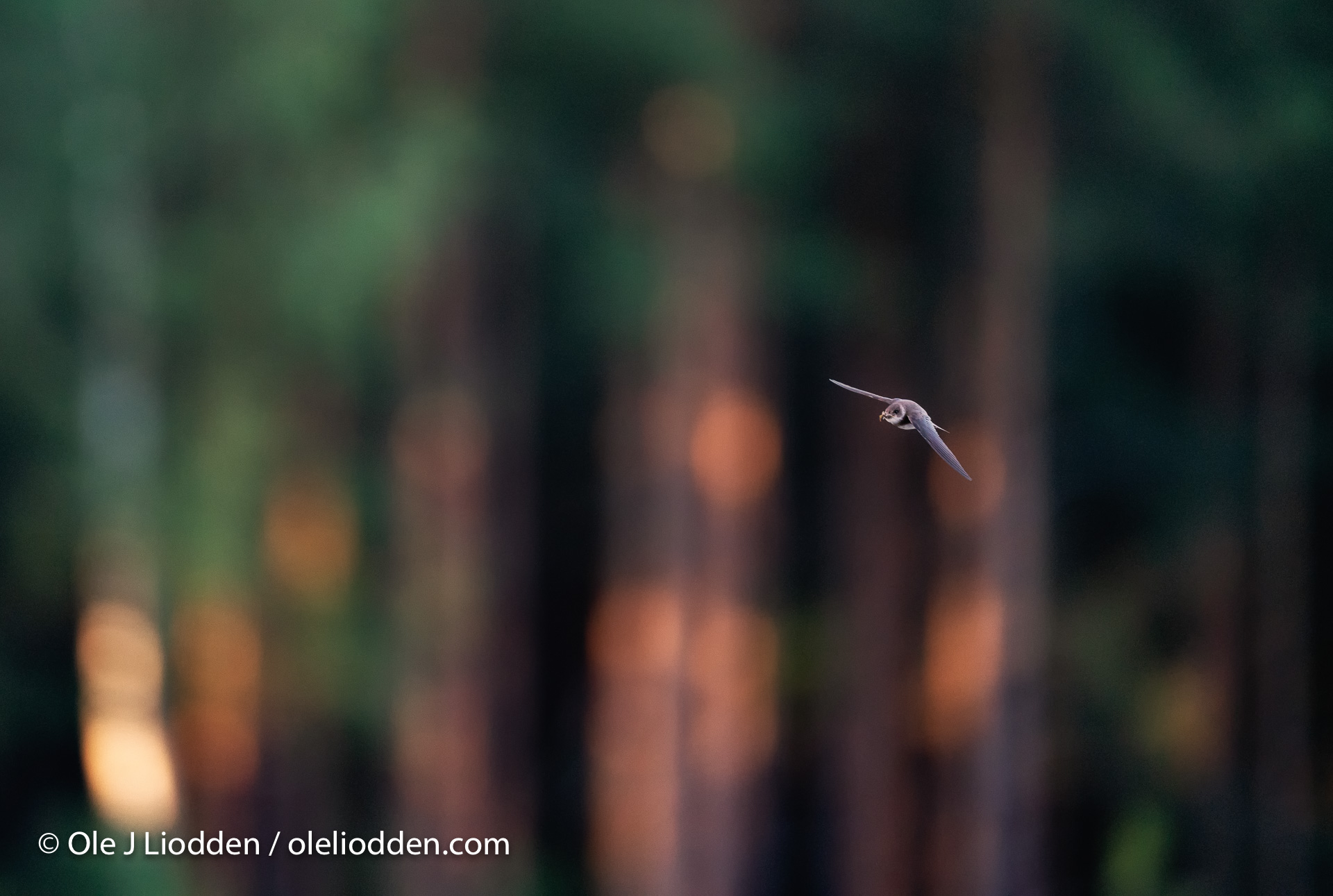
SHOOTING BACKLIT
[columnize]
I really enjoy photographing wildlife in backlit, and one of my biggest questions regarding the new Sony 600mm f/4.0 was how it performed in backlit conditions. However, I didn’t get many chances for backlit photographing during this short test. In one situation, I photographed a flycatcher siting in between the leaves straight into the sun. I can’t see any flares or problems with the lense in this situation, and it seems that Sony has succeeded to make a top-quality lens also for backlit situation.
[/columnize]
[gap size=”50px”]
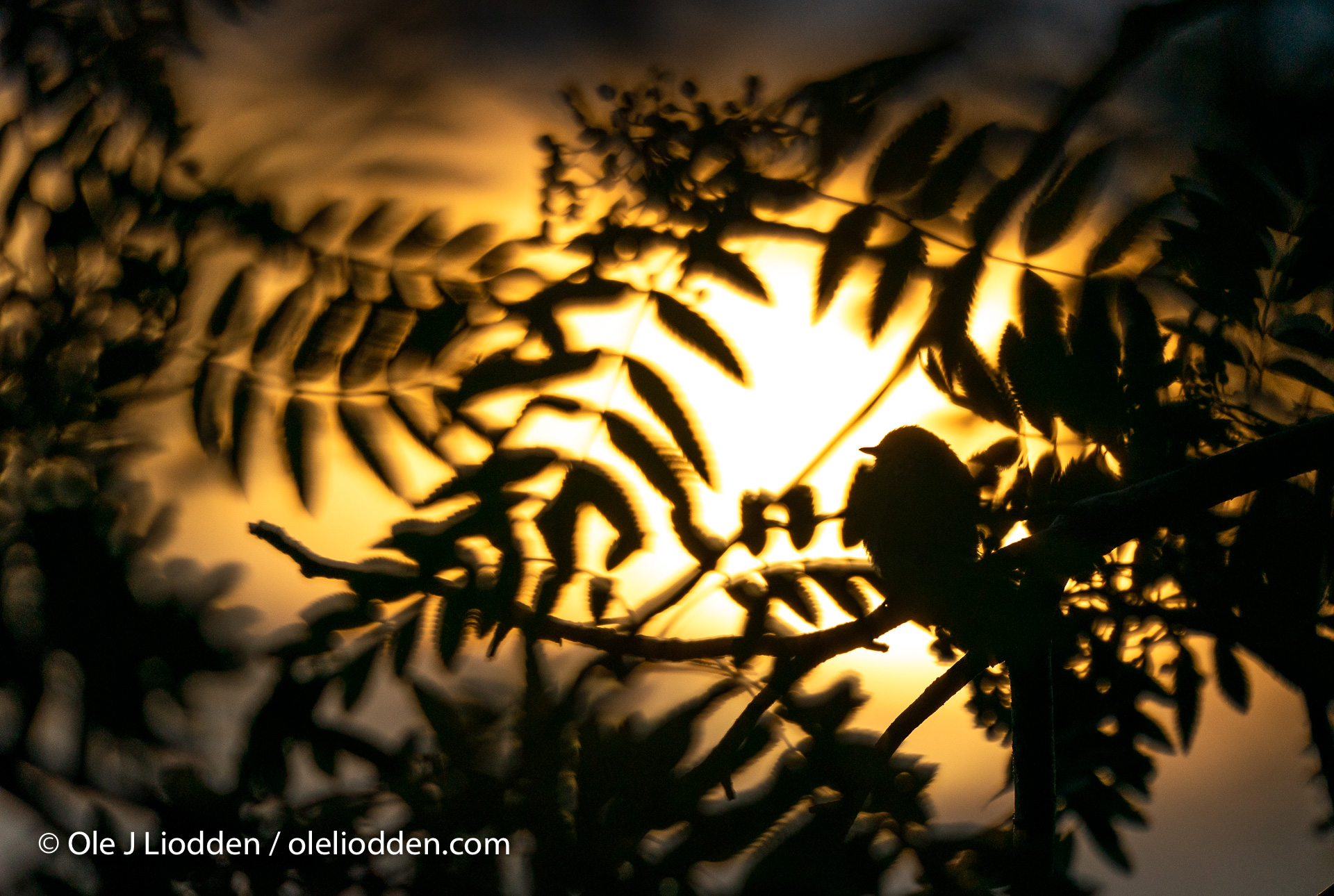
LENS WEIGHT
[columnize]
The new Sony 600mm f/4.0 weights only 3040g. This is 10g lighter than the new Canon 600mm III and 770g lighter than the Nikon 600mm f/4.0 (3810g), I’m using for a lot of my photography. With a lighter camera body (compared to Nikon D5 or D850) the weight is about 3650g (Sony A9 + 600mm), compared to 5215g (Nikon D5 + 600mm). These 1565g, makes a huge difference in the field or traveling with equipment. The A9 – 600mm combo is actually lighter than any combinations on Nikon 300/2.8 lenses and cameras. It is now possible with handheld photography for longer periods (also because of a more balanced lens), or switch to a lighter tripod and smaller tripod head. Even with the light weight of the Sony 600mm F/4.0, I never got the feeling of plastic or weak construction. It rather felt like a solid, high-tech tool.
[/columnize]
CLOSEST AF-DISTANCE
[columnize]
The closest AF distance with the new Sony 600mm lens is 4,5 meter, which is about what I’m used to from shooting with Nikon 600mm lenses. The newest Nikon 600mm improved in 2015 the closest focus distance om 4,8m to 4,4m, however it is not possible to use the AF on the closest distance (4,4m), only with manual focus. I did not have time to control the closest focusing distance on the Sony 600mm, but it seems to be in the same range as the Nikon (4,4m) and Canon (4,2m) 600mm lenses.
[/columnize]
OVERALL
[columnize]
My overall impression of this new telephoto lens is that it is extremely well made, fast, reliable and light-weighted. It is difficult to find anything to improve, maybe except the pricing. Hopefully I will have another chance soon to use the lens on an expedition to test it in different situations.
Comments
ABOUT OLE J LIODDEN
[columnize]
Ole J Liodden of Norway is a pro wildlife photographer (since 2004) and the founder of WildPhoto Travel (former Naturfokus). He has previously been a Canon (2008-2010) and Nikon Ambassador (2010-2012) in Norway, and he was chosen as one of the photographers for the Wild Wonders of Europe project – the world’s largest communication project regarding nature and environmental conservation in Europe.
In the past 12 years, Ole has published 9 books about nature and photography (including 2 how-to-do books). His images has received 3 awards in the prestigious competition BBC Wildlife Photographer of the year (Winner in 2012) and 9 awards in GDT. He was awarded as the Arctic Photographer of the Year 2012 by the Global Arctic Award. Ole is considered to be one of the top wildlife photographers in Europe, and was one of the main judges in the Wildlife Photographer of the year 2019.
His experience as a photo guide and expedition leader in WildPhoto Travel has led him to destinations such as Svalbard, Antarctica, Africa, New Zealand, Russia Far East and the Galapagos. Penguins, polar bears, polar landscape and wildlife are some of Ole’s specialities, after 45 summer and winter expeditions to Svalbard and 10 expeditions to Antarctica / sub-Antarctic islands.
[/columnize]